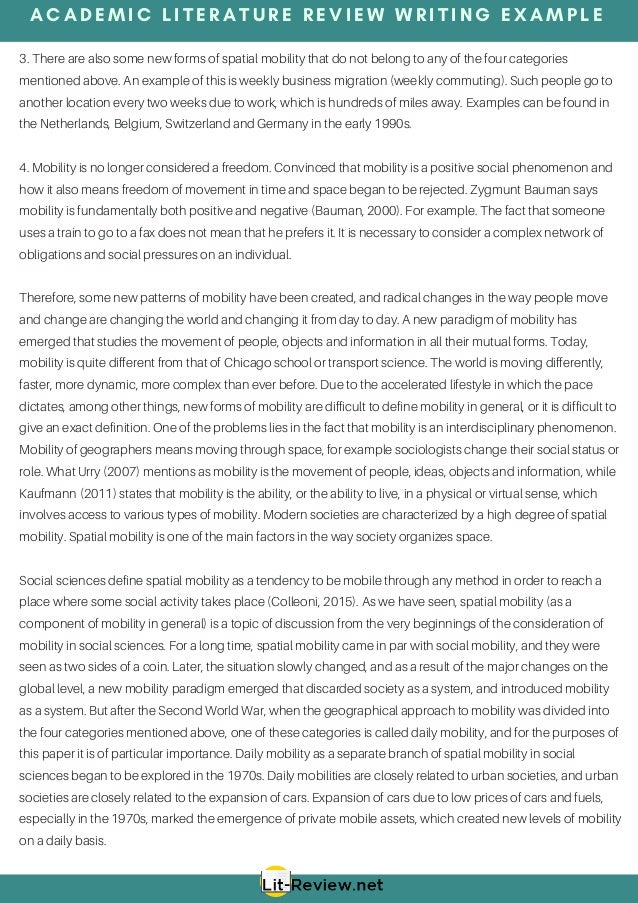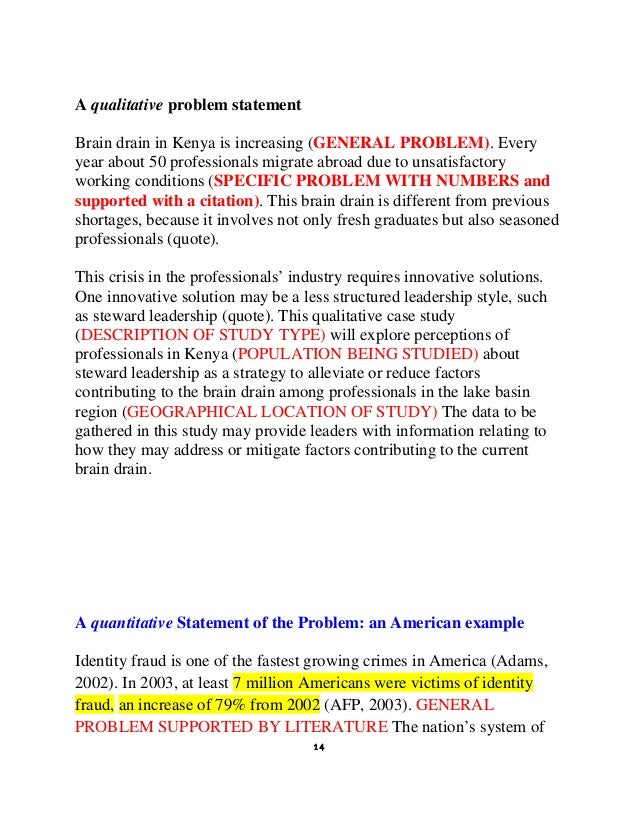
"A literature review is a piece of discursive prose, not a list describing or summarizing one piece of literature after another. It's usually a bad sign to see every paragraph beginning with the name of a researcher. Instead, organize the literature review into sections that present themes or identify trends, including relevant theory Literature refers to a collection of published information/materials on a particular area of research or topic, such as books and journal articles of academic value. However, your literature review does not need to be inclusive of every article and book that has 18/11/ · The literature review is a section in dissertation or research paper where you need to summarise existing research information of different scholars. It should be relevant to the topic and written from secondary sources. Mention all the scholarly opinion that exists on the topic or subject
Academic writing: What is a literature review? | SFU Library
Work out what you need to address in the literature review. What are you being asked to do in your literature review? What are you searching the literature to discover? Check your assignment question and your criteria sheet to know what to focus on. Select appropriate source material: Use a variety of academic or scholarly sources that are relevant, current and authoritative. An extensive review of relevant material will include — books, journal articles, reports, government documents, conference proceedings and web resources.
The Library would be the best place to search for your sources. The number of sources that you will be required to review will depend on what the literature review is for and how advanced you are in your studies. It could be from five sources at first year undergraduate level to more than fifty for a thesis.
Your lecturer will advise you on these details. Keep a note of the publication title, date, authors' names, page numbers and publishers. These details will save you time later.
In order for your writing to reflect strong critical analysis, you need to evaluate the sources. For each source you are reviewing ask yourself these questions:, literature review in academic writing. Each body paragraph should deal with a different theme that is relevant to your topic. You will need to synthesise several of your reviewed readings into each paragraph, so that there is a clear connection between the various sources.
You will need to critically analyse each source for how they contribute to the themes you are researching. Connect on social media. This work is licensed under a Creative Commons Attribution-NonCommercial-ShareAlike 3. Site Index. QUT literature review in academic writing How to write a literature review. QUT write Starting well Writing well How to write an annotated bibliography How to write a case literature review in academic writing response How to write a critique How to write an empirical article How to write an essay How to write a literature review How to write a reflective task How to write a report Finishing well.
How to write a literature review. Prepare Structure of a literature review Checklist Prepare Determine literature review in academic writing purpose Work out what you need to address in the literature review.
Do an extensive search of the literature Find out what has been written on the topic. What kind of literature? How many resources? Note the bibliographical details of your sources Keep a note of the publication title, date, authors' names, page numbers and publishers. Read the literature Critically read each source, look for the arguments presented rather than for facts. Take notes as you read and start to organise your review around themes and ideas. Consider using a table, matrix or literature review in academic writing map to identify how the different sources relate to each other.
Analyse the literature you have found In order for your writing to reflect strong critical analysis, you need to evaluate the sources. For each source you are reviewing ask yourself these questions: What are the key terms and concepts?
How relevant is this article to my specific topic? What are the major relationships, trends and patterns? How has the author structured the arguments? How authoritative and credible is this source? What are the differences and similarities between the sources?
Are there any gaps in the literature that require further study? Write the review Start by writing your thesis statement. This is an important introductory sentence that will tell your reader what the topic is and the overall perspective or argument you will be presenting. Like essays, a literature review must have an introduction, literature review in academic writing, a body and a conclusion.
Structure of a literature review Introduction Your introduction should give an outline of: why you are writing a review, and why the topic is important the scope of the review — what aspects of the topic will be discussed the criteria used for your literature selection e. type of sources used, literature review in academic writing, date range the organisational pattern of the review.
Body paragraphs Each body paragraph literature review in academic writing deal with a different theme that is relevant to your topic. The body could include paragraphs on: historical background methodologies previous studies on the topic mainstream versus alternative viewpoints principal questions being asked general conclusions that are being drawn. Conclusion Your conclusion should give a summary of: the main agreements and disagreements in the literature any gaps or areas for further research your overall perspective on the topic.
Checklist Have I: outlined the purpose and scope? recorded the bibliographical details of the sources? analysed and critiqued your readings? identified gaps in the literature and research? discussed the varying viewpoints? written an introduction, body and conclusion? checked punctuation and spelling? Further information HiQ: Managing weekly readings HiQ: Notetaking HiQ: Structuring your assignment RMIT University: Literature review - Overview. Global links and information QUT cite Referencing and using sources APA Harvard AGLC Vancouver, literature review in academic writing.
QUT write Starting well Writing well Finishing well. Academic integrity What is academic integrity at QUT? What if you are accused of academic misconduct? How can I avoid plagiarism? What is copyright and how does it apply to me?
About Background and development Changes to QUT cite write Need more help? QUT Home Current students Current staff QUT Blackboard Library CRICOS No. Acknowledgement of Traditional Owners QUT acknowledges the Traditional Owners of the lands where QUT now stands.
How to Write a Literature Review in 30 Minutes or Less
, time: 17:12How To Write a Literature Review - Sample & Example

22/2/ · When you write a thesis, dissertation, or research paper, you will have to conduct a literature review to situate your research within existing knowledge. The literature review gives you a chance to: Demonstrate your familiarity with the topic and scholarly context Develop a theoretical framework and methodology for your research Literature refers to a collection of published information/materials on a particular area of research or topic, such as books and journal articles of academic value. However, your literature review does not need to be inclusive of every article and book that has "A literature review is a piece of discursive prose, not a list describing or summarizing one piece of literature after another. It's usually a bad sign to see every paragraph beginning with the name of a researcher. Instead, organize the literature review into sections that present themes or identify trends, including relevant theory

No comments:
Post a Comment